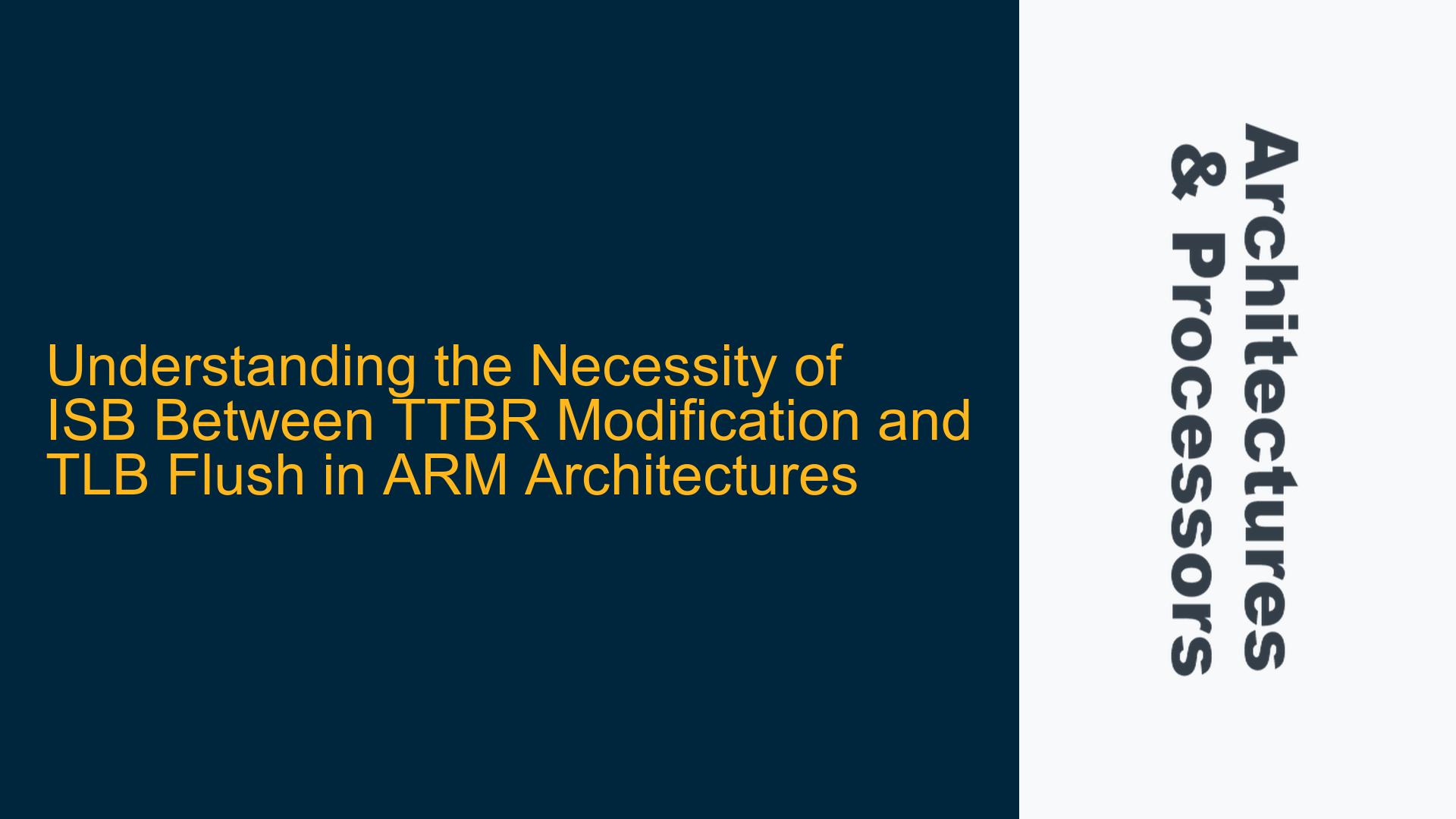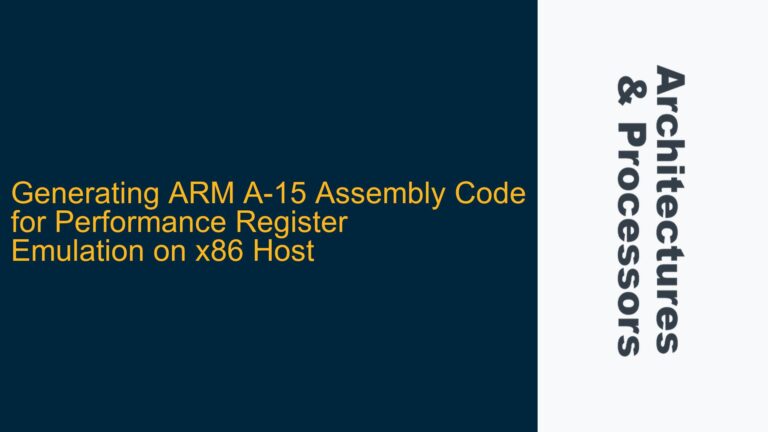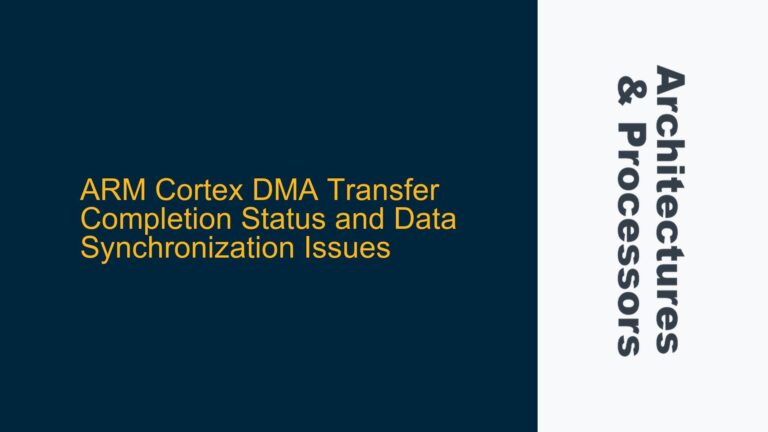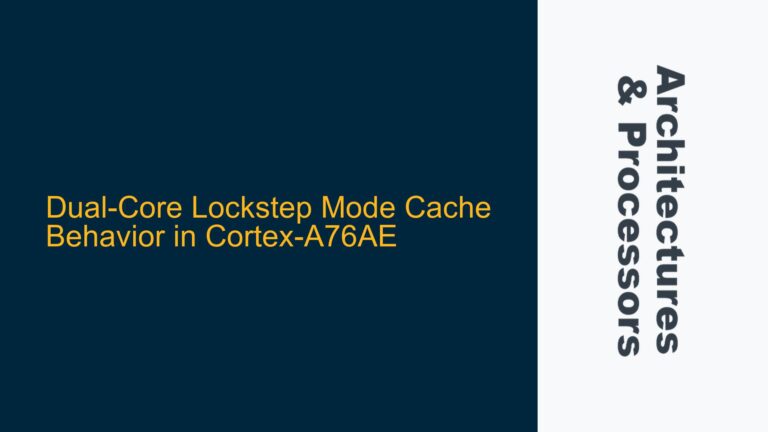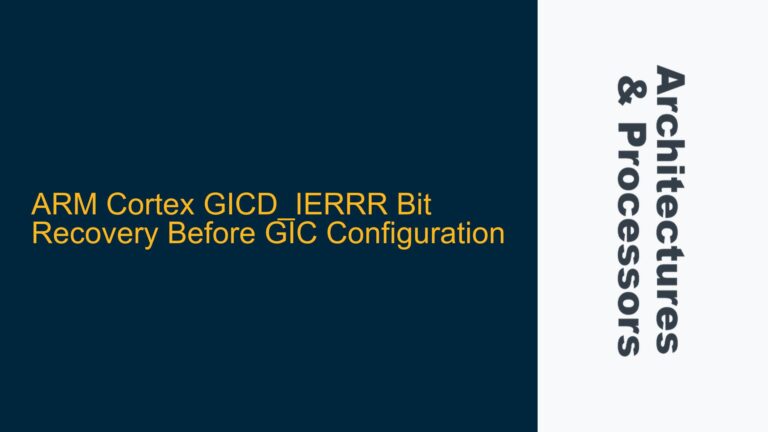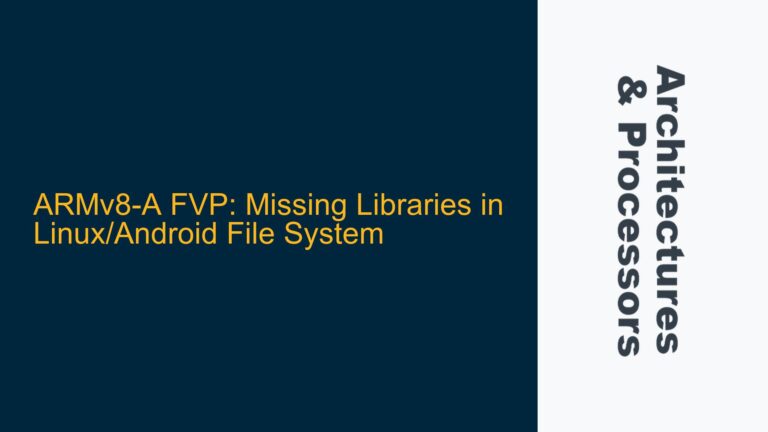ARM Cortex-A Series: TTBR Update and TLB Invalidation Synchronization
When working with ARM architectures, particularly the Cortex-A series, one of the most critical operations is the modification of the Translation Table Base Register (TTBR) and the subsequent invalidation of the Translation Lookaside Buffer (TLB). The TLB is a cache that stores recent translations of virtual to physical addresses, and the TTBR holds the base address of the translation tables used by the Memory Management Unit (MMU). Ensuring that these operations are performed in the correct sequence and with the appropriate synchronization is crucial to maintaining the integrity of the memory management system.
In the context of ARMv8-A architecture, the process of updating the TTBR and invalidating the TLB involves several steps that must be carefully orchestrated to avoid subtle but severe issues such as Data Aborts or incorrect memory translations. The key to this orchestration lies in the use of synchronization barriers, specifically the Instruction Synchronization Barrier (ISB) and the Data Synchronization Barrier (DSB). The ISB ensures that all subsequent instructions are fetched with the updated context, while the DSB ensures that all previous memory operations are completed before proceeding.
The core issue arises when the TTBR is updated, and the TLB is invalidated without proper synchronization. Without an ISB between the TTBR update and the TLB invalidation, the processor might still be using the old TTBR value for speculative table walks, leading to incorrect translations and potential Data Aborts. This issue is particularly critical in systems where the MMU is enabled, and the caches are disabled, as the lack of caching exacerbates the visibility of synchronization issues.
The Role of ISB in Context Synchronization After TTBR Modification
The necessity of an ISB between the modification of the TTBR and the invalidation of the TLB stems from the requirement for context synchronization. When the TTBR is updated, the change is not immediately visible to all parts of the processor. The ISB acts as a context synchronization event, ensuring that all subsequent instructions are fetched with the updated TTBR value. Without this synchronization, the processor might continue to use the old TTBR value for speculative table walks, leading to incorrect translations.
The ARM Architecture Reference Manual (ARM ARM) explicitly states that changes to system registers, such as the TTBR, require a context synchronization event to ensure that the changes are visible to subsequent instructions. This synchronization can be achieved either through an ISB or an exception entry/exit. In the case of TTBR updates, an ISB is the most straightforward and efficient way to ensure that the new TTBR value is used for all subsequent memory accesses.
The ISB ensures that the processor’s pipeline is flushed, and all instructions following the ISB are fetched with the updated context. This is particularly important in scenarios where the TTBR is updated to point to a new set of translation tables. Without the ISB, the processor might still be using the old translation tables for speculative table walks, leading to incorrect translations and potential Data Aborts.
Implementing Proper Synchronization with ISB and DSB in TTBR and TLB Operations
To ensure proper synchronization when updating the TTBR and invalidating the TLB, a specific sequence of operations must be followed. This sequence includes the use of both ISB and DSB instructions to ensure that the TTBR update is visible before the TLB invalidation and that the TLB invalidation is complete before any subsequent memory accesses.
The correct sequence of operations is as follows:
- Update the TTBR with the new translation table base address.
- Execute an ISB to ensure that the TTBR update is visible to all subsequent instructions.
- Invalidate the TLB using the TLBI instruction.
- Execute a DSB to ensure that the TLB invalidation is complete before proceeding.
- Execute an ISB to ensure that all subsequent instructions are fetched with the updated translations.
This sequence ensures that the TTBR update is visible before the TLB is invalidated, preventing the processor from using the old TTBR value for speculative table walks. The DSB ensures that the TLB invalidation is complete before any subsequent memory accesses, and the final ISB ensures that all subsequent instructions are fetched with the updated translations.
In scenarios where the TTBR is updated to point to a completely new set of translation tables, additional considerations may be necessary. For example, if the new translation tables are in a different memory location than the old ones, it may be necessary to ensure that the new tables are fully populated and valid before updating the TTBR. This may involve additional synchronization steps, such as ensuring that all data writes to the new tables are complete before updating the TTBR.
In conclusion, the use of ISB and DSB instructions in the correct sequence is crucial to ensuring proper synchronization when updating the TTBR and invalidating the TLB in ARM architectures. Without these synchronization barriers, the processor may use stale translations, leading to incorrect memory accesses and potential Data Aborts. By following the correct sequence of operations, developers can ensure that their systems operate reliably and efficiently, even in complex memory management scenarios.
